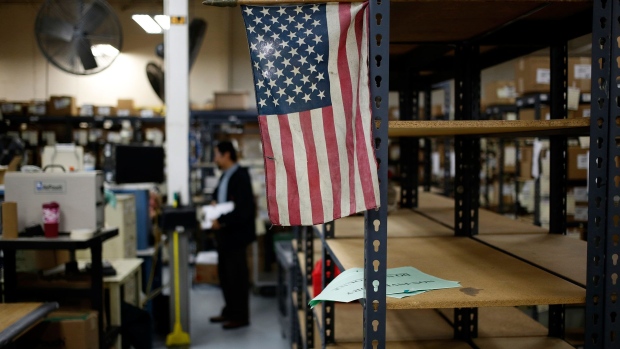Feb 16, 2023
US Producer Prices Exceed Forecast in Biggest Gain Since June
, Bloomberg News

(Bloomberg) -- US producer prices rebounded in January by more than expected, underscoring persistent inflationary pressures that could push the Federal Reserve to pursue further interest-rate increases in the months ahead.
The producer price index for final demand jumped 0.7% last month, the most since June and bolstered by higher energy costs, according to data out Thursday from the Bureau of Labor Statistics. The PPI climbed 6% from a year earlier.
The median estimates in a Bloomberg survey of economists called for the index to increase 0.4% from a month earlier and 5.4% from January 2022. The S&P 500 fell and Treasury yields rose after report.
Excluding the volatile food and energy components, the so-called core PPI advanced 0.5% in January and 5.4% from a year earlier.
The data come just days after the closely watched consumer price index showed lingering and still-elevated inflationary pressures despite the Fed’s aggressive monetary policy actions over the past year. The PPI, which is a measure of wholesale prices, has generally been cooling in recent months amid improving supply chains, a pullback in many commodities prices, and a tempering in goods demand.
That said, inflation appears to be stickier than many anticipated. Looking ahead, the strength of the labor market as well as global commodities prices will be key for the overall inflation picture.
“While producer prices are off their peaks, inflation is elevated and the monthly change in prices showed a move in the wrong direction last month,” Rubeela Farooqi, chief US economist at High Frequency Economics, said in a note. “These data will keep the Fed on track to raise interest rates further.”
Services Firm
While the overall figure was bolstered by a 1.2% jump in goods prices, also the largest since June, some key services measures rose firmly. Hospital outpatient care increased 1.4% last month, while price indexes for auto retailing, portfolio management and airline services also moved higher.
So-called other services increased 0.6%, the most in a year.
Several categories from the PPI report, notably in health care, are used to calculate the personal consumption expenditures price gauge. Those figures will be released next week.
Producer prices excluding food, energy, and trade services — which strips out the most volatile components of the index — increased 0.6%, the sharpest advance since March.
The PPI report showed food prices dropped 1%, the most since December 2020, after a 0.9% slide at the end of 2022. Energy prices increased 5%, the most since June. Excluding the food and energy components, final demand for goods advanced 0.6%, the biggest advance since May.
What Bloomberg Economics Says...
“The increase in January’s PPI — which rose far more than the survey estimates, erasing last month’s decline — moderates our expectations for disinflation over the year ahead.”
— Stuart Paul, economist
For the full report, click here
Other data out Thursday showed applications for unemployment insurance held at a historically low level last week, while housing starts fell for a fifth month to the slowest annualized pace since mid-2020.
Intermediate Goods
Costs of processed goods for intermediate demand, which reflect prices earlier in the production pipeline, increased for the first time since June. Excluding food and energy, those prices slid for a seventh month.
Separate data have painted a more mixed picture on cost pressures. Only a handful of manufacturing industries reported paying higher prices for materials in the Institute for Supply Management’s January report, keeping the group’s gauge of prices paid in contraction territory.
The New York Fed’s measure of prices paid by factories in the state, however, increased in February. The gauge of prices received climbed to a six-month high.
The producer-price report also incorporates the annual revisions released earlier this week, which did not meaningfully change the path of PPI in late 2022.
--With assistance from Jordan Yadoo.
(Adds markets)
©2023 Bloomberg L.P.





